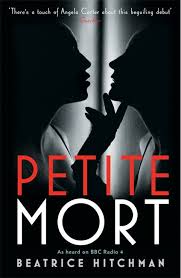Beatrice Hitchman’s Petite Mort is a thrilling novel about double identities, the visual trickery of cinema, and ambition. In this thriller, nothing is as it initially appears and even the novel’s title has two meanings: literally, ‘little death’ which is also a euphemism for orgasm. In 1913, Adéle Roux moves to Paris in an attempt to realise her dream of becoming an actress. After a failed audition, Adéle is offered a job as a seamstress at the film studio and begins an affair with a handsome cinematographer. Adéle hopes André Durand will use his status at Pathé to give her a leading role, but André has other ideas. He moves Adéle into his home with the intention that she be his concubine and also an assistant to his wife, the volatile leading lady of French cinema, Terpsichore. The dynamic between the three soon changes, which sets in motion the events for the novel’s surprising conclusion.
Despite its historical setting the novel has a contemporary feel due to the non-linear narrative. The main plot is intermingled with flashbacks and the events also move forward in time to 1967, where a journalist is interviewing Adéle. She’s trying to discover more about a fire at Pathé that occurred in 1914, and why the doppelgänger special effect scene is missing from the silent film Petite Mort. As the narrative perspectives shift, we gain an insight into each character’s secrets and motivations. The most interesting of the back stories belongs to André, as we learn about his cinematic wizardry. The novel is meticulously researched; small details like flies buzzing around the studio because they’re attracted to the chemicals used in film production make it clear Hitchman knows a great deal about film making. She perfectly captures the sense of wonderment that audiences experienced in the early days of cinema. The first time a film is shown in Adéle’s village her: ‘superstitious aunt shrieks’ and ‘ a fully grown man […] snorts like a frightened horse’.
There’s an almost magical element to Hitchman’s prose, most evident in her descriptions: ‘The house radiates wealth: gold stone, its shutters beaming wide, its windows blue in the summer evening. The mansard roof is slate and the lawn trimmed a perfect poison-green’. The images are vivid which adds to the novel’s film-like quality.
Despite being beautifully drawn, Hitchman’s characters are shallow and self-serving and in keeping with the novel’s cinematic theme we wonder if the romances are real or simply an illusion However, there’s enough intrigue and scandal to ensure this debut remains gripping to its final page.


Comments are closed.